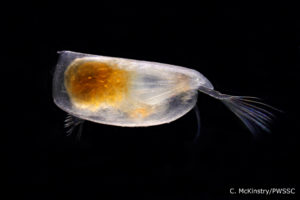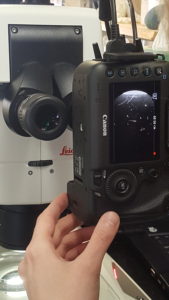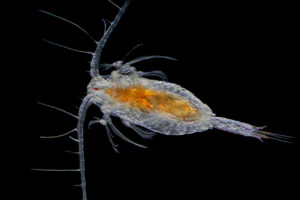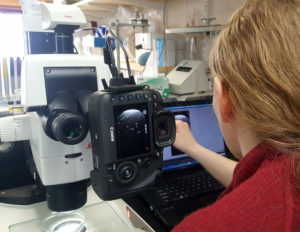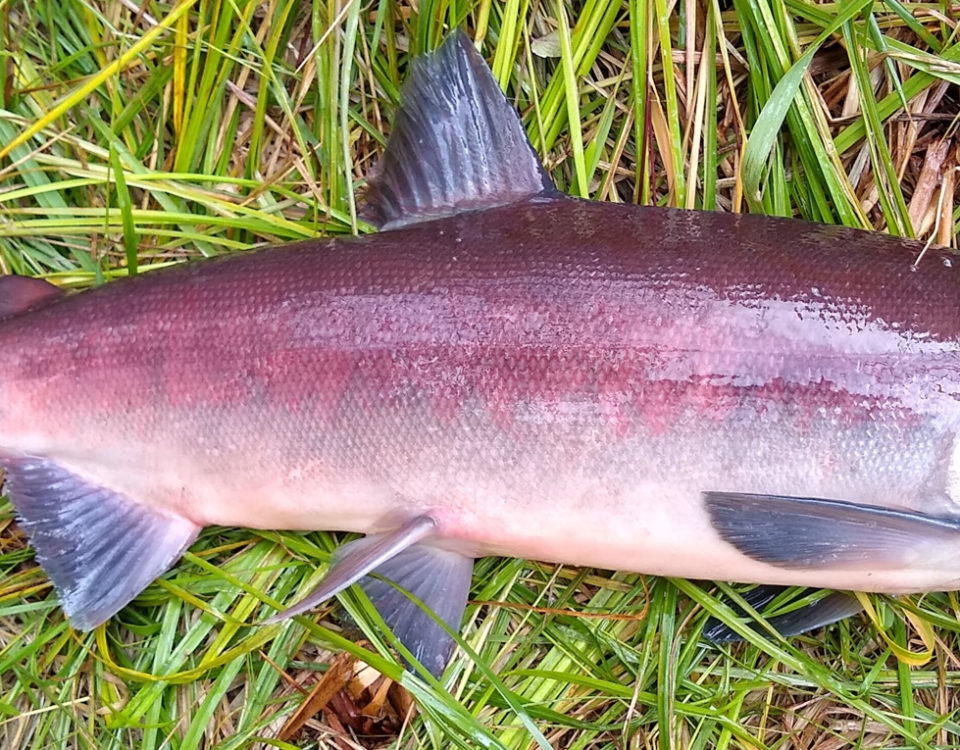Plankton Photomicrography
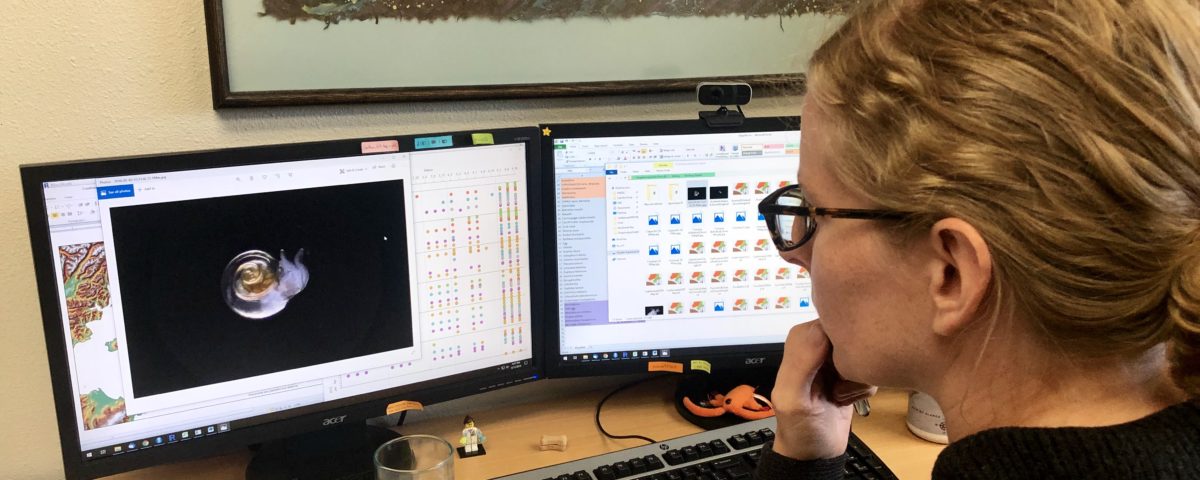
By Kinsey Justa, August 21, 2019
Monitoring and understanding the rich diversity of biological resources in Prince William Sound is an important part of the Prince William Science Center’s mission. However, some of the greatest diversity and biomass in our bioregion is difficult to observe and understand due to its size. Zooplankton are tiny, microscopic animals that drift in the ocean currents. Some plankton will always remain tiny and others are simply in a larval stage of their life cycle until they grow to adulthood.
While these small creatures may seem insignificant in size, they are hugely important to the Prince William Sound bioregion and to our human economies. The diversity of plankton in the Sound, their community make-up and abundance, can be a direct indicator as to the health of the fisheries in the region. Plankton form the base of the food web in the ocean and are a significant food source for herring and salmon smolt. The seasonal bloom of plankton in the spring that follows winter nutrient upwelling is an important ecological event as it provides food for many primary and tertiary predators. “If you like salmon and bears,” research assistant Caitlin McKinstry says, “then you should like plankton too because they are the basis for all the life here.”
Since 2010, the PWSSC has been monitoring plankton in the Sound using a variety of methods to achieve research goals. Much of this monitoring is completed during research cruises on board a vessel as a part of Dr. Rob Campbell’s biological oceanography research which aims to understand how plankton and fish interact with the physical environment (temperature, salinity, and nutrients). Sometimes these excursions also allow plankton samples to be taken back to the Science Center for further observation. It’s here, in the lab, where Caitlin has explored ways to capture images of these fascinating creatures in detail. Her experiments with photography under the microscope have allowed the Science Center to build a small but ever growing gallery of detailed zooplankton imagery. Using a photography technique called focus stacking, images of this microscopic life can be captured in greater detail. Focus stacking is a complicated photography technique used to extend a photo’s apparent depth of field. The technique is well known for improving the image quality of macro photos and makes images more dynamic.
Mounting a digital Canon camera directly onto a microscope, Caitlin is able to photograph multiple layers of focus. Most of this digital photography is done in either jpeg or raw format and then transferred to a desktop-based program which allows the images to be collated together. The microscope itself is a vintage Leitz brand light microscope and is typically set on objectives ranging from 1-10x. A single plankter specimen may be photographed 15 to 50 times to create a final focus stacked photograph. The individual live plankter is chosen out of the larger Petri dish of plankton specimens available and after the specimens are observed and photographed they are released.
Caitlin’s primary goal for her zooplankton photography is to help provide the scientific community and the public with a better representation of these incredible forms of life that are so important and yet can be so difficult to visualize. Just because zooplankton are small does not mean that their communities are insignificant. “There’s a wide variety of crazy interactions going on and they are very important to our region.” Caitlin says of the zooplankton communities in Prince William Sound.
The photographs offer an engaging opportunity for science outreach and education, as well as supporting the larger monitoring efforts of PWSSC. Recently, many zooplankton species have been observed that are more commonly found off of the coast of California in waters much warmer than that of Prince William Sound. The presence of these species, such as Mesocalanus tenuicornis and Corycaeus anglicus may be an indicator of biological community shift due to ocean temperature changes. PWSSC oceanographers hypothesize that the warm-water anomaly known as “The Blob” allowed Corycaeus anglicus to increase its range in 2015 and 2016. Importantly, a shift in the zooplankton community could have an effect on the wild salmon population since these species may not be as high quality a nutrient source for feeding smelt.
Zooplankton, such as those in Caitlin’s microscope photographs, are important in many other ways as well. Several species of zooplankton such as Limacina helicina, a type of sea snail, are indicator species for rising levels of ocean acidification. Ocean acidification reduces their ability to grow the delicate calcium carbonate shells they need to survive. Furthermore, the majority of the world’s oxygen supply is produced, not by trees, but rather by tiny phytoplankton in the world’s oceans. For this reason and others, the research of planktonic creatures is important to many scientific bodies around the globe and the monitoring efforts at PWSSC could help inform this research.
Plankton Photomicrography credit to: research assistant Caitlin McKinstry


